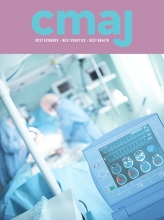Jump to comment:
- Page navigation anchor for Proton beam therapy should remain in the public domainProton beam therapy should remain in the public domain
We would like to respond to the article “Proton beam therapy for cancer” by Tsang and Patel that was published recently in the CMAJ (CMAJ 2019 June 17;191:E664-6. doi: 10.1503/cmaj.190008).
As the authors state, radiotherapy is a critical element of treatment for one third to one half of all patients with cancer. Over the past two decades, there have been significant improvements in the way radiotherapy is delivered, one of the most important being proton beam therapy that allows greater sparing of normal tissue adjacent to the tumour as compared with other forms of radiotherapy. This is especially important for young children and adults whose overall survival is currently in Canada >80% and who are particularly vulnerable to potentially devastating long-term effects of treatment. Currently, no proton beam facility exists in Canada and patients deemed eligible receive this therapy at proton centres in the United States at a cost often exceeding $250,000 per patient, paid for by the provincial health plans. In Quebec there is a well-established process for referral for treatment with proton therapy in the United States but even so the number of children and young adults that currently benefit from this treatment is lower than expected: some are simply not well enough, for example after major operations, to travel while for others there may be important practical considerations.
As Tsang and Patel mention, a private corporation has recently expressed an in...
Show MoreCompeting Interests: None declared.











